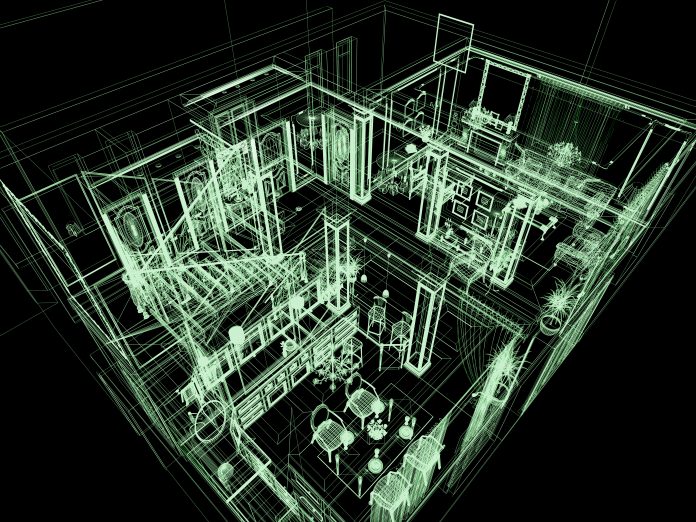John Kitchingman, managing director, EuroNorth, Dassault Systèmes, explores how building designs can be reshaped to fit a post-pandemic future with the help of virtual twins
In the midst of the race to net zero, businesses and people alike are reengineering their traditional processes for a sustainable future. This journey won’t be simple, and the burden doesn’t fall on one person, company or industry. Instead, it will require a collective effort for all to map out their way to a sustainable future.
What does that mean for the likes of buildings and their future designs?
Growing populations, increasing housing demand and pressure to be more sustainable than ever before is resulting in a clear shift in how buildings should be designed. Post multiple lockdowns, people are reconsidering how they want to work and live. Citizens want affordability and minimal noise and traffic pollution. As a result, the traditional building process is no longer a fit for our post-pandemic needs and methods need reshaping now.
Aligning with the sustainability agenda
Now an irreversible trend, climate change is the defining challenge of our time. Climate issues are accelerating quickly, and with global regulation pushing for a more circular economy in line with market expectations, aligning to the sustainability agenda won’t be easy. Commercial and residential buildings account for 50% of global emissions, 40% of global energy demand, 60% of global electricity use, 25% of global water usage and a third of global greenhouse gas (GHG) emissions. On top of that, the construction industry also contributes 13% of GDP and makes up 7% of today’s global workforce – highlighting how important it is for the sector to become more efficient and circular, mirroring the natural world.
Traditionally, construction has been years behind in digital transformation and productivity growth as building projects not only have bespoke requirements, but also need to comply with many regulations to ensure safety. Coupled with the disruption caused by Covid-19, which led to shortages of raw materials and substantial price increases in steel and timber, the industry hasn’t had very many viable options for rethinking future processes.
So where do we start with aligning this industry with the sustainability agenda?
Technology.
Starting construction in a virtual environment
The traditional linear take-make-dispose construction model is no longer relevant, and the industry is preparing for a new model of how global buildings are planned, designed, and even dismantled. The start of a building no longer begins pen to paper. Instead, its inception starts in a fully collaborative, virtual environment: a process called a virtual twin. Virtual twins can be created of anything, and you can replicate its behaviours and assets in a virtual environment, all before it is made in real life, reducing cost and making the process more sustainable
So far, the virtual twin opportunity is largely untapped primarily due to the fragmented and complex nature of the industry — with only 10% adoption globally. However, there is a real opportunity to address some major challenges the industry is facing, including:
Regulatory compliance
With so many regulation factors to consider, you can simulate them all into a virtual design of the building, see how a construction will interact with its surroundings and see whether this will have any implications on country or even climate regulations in the future.
Data-driven decision making
Data from multiple stakeholders can be accessed, aggregated and analysed to accelerate decision-making, lower the likelihood of rework on design and boost overall productivity.
Breaking down siloes
A big barrier to more efficient sustainable solutions in the construction industry has been siloed working and lack of coherence and alignment along the value chain from various teams. A virtual twin tackles this, enabling better collaboration, better control of the value chain, contractual coherence and data-driven decision making.
Material selection
Concrete and steel account for 10% of the planet’s gas emissions so builders need to look for more affordable and sustainable options. Within a virtual platform, users can assess different materials that will be best for the project, and that will also have the lowest carbon-based impact on the world once created.
While I have only addressed just a small fraction of the challenges this technology addresses, it’s clear that it has potential to foster new levels of quality and efficiency in products and operations. First movers and bold decision-makers will gain market share and competitiveness for sustainable business success.
Putting virtual planning into action One organisation already tapping into virtual twin technology is Luxembourg-based Leko Labs who create cross-machined wooden modules that can be assembled and then disassembled, allowing houses to be expanded, reconfigured or rebuilt into something else. It has an ambitious building strategy to reduce the building time of a conventional house from 24 months right down to 24 hours, with robotised component manufacture and assembly. This has a huge effect on the construction industry economics because it can increase room spaces within the same footprint as a conventional property and substantially cut build times, meaning developers can provide more accommodation and see a faster return on their investments.
With the support of virtual twin technology, the industry can make mass customisation a reality as we see a trend on the horizon of people being able to configure their home online the same way as they currently specify their car. Furthermore, if labour shortages continue, digitalisation and automation of the industry will help achieve commercial and environmental sustainability, enabling more cost-effective housing for generations to come.
With less than 10 years for countries to deliver on UN Sustainable Development Goals (SDGs), all stakeholders are conscious that it’s time for radical and urgent action. The construction industry plays a significant role in a new era of technological breakthroughs, digitisation, and virtualisation. What was technologically inconceivable even a few years ago is now feasible.
Virtual twins offer the construction ecosystem a unique opportunity to reset and reshape and their future by leveraging real-time planning simulation tools that drive data driven decisions. Virtual twins are today’s levers of sustainable competitiveness for construction companies to connect societal and regulatory demands with internal efficiency gains and growth opportunities, paving the way for a more sustainable and human-centric future.














